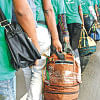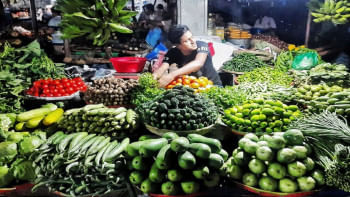Workers are heading back overseas: here’s how govts should respond

Deployment of migrant workers from Asia is slowly getting back on track after plummeting due to the Covid-19 pandemic during the first quarter of 2020. Some countries are recording departures of migrant workers exceeding pre-pandemic levels.
In Nepal, labour approvals for overseas employment in 2021 have surpassed 2019 numbers. As of August 2022, Bangladeshis heading for work abroad totaled 784,000, the highest number since 2018.
Upward labour migration trends are also seen in Pakistan, the Philippines, and Sri Lanka but nowhere near the pre-pandemic numbers.
In Pakistan, recovery seems relatively faster among low-skilled workers. Meanwhile, deployment of Indonesian workers remained lacklustre, especially among female migrants who mainly work as domestic workers and caregivers.
Labour mobility from the developing Pacific Island countries showed impressive trends, largely thanks to measures to ease inward migration introduced by the governments of Australia and New Zealand during the pandemic. Amid higher caps in the Recognized Seasonal Employer scheme, the number of arrivals to New Zealand for the fiscal year 2021 from Samoa (3,334) and Vanuatu (4,983) already exceeded the pre-pandemic level.
These recoveries are driving an optimistic migration outlook for the full year 2022 and beyond from governments of major migrant-origin countries in South and Southeast Asia. Six of the nine participating government representatives in our recent Deployment and Outlook Survey on Labour Migration are expecting a similar or higher levels of overseas employment for 2022 relative to 2019.
Many cite the easing of quarantine protocols driving the uptrend in labour migration as well as the recovery of interest among prospective migrants in working abroad.
The easing of mobility restrictions and border controls and restoration of economic activities in major migrant-host economies are driving demand from specific sectors, such as service and construction. In fact, employment-based visa issuances increased in 2021 in some large migrant-host countries, such as Australia, Canada, the United Kingdom, and the United States, albeit remaining below pre-pandemic levels.
In contrast, however, recovery of migration within Asia seemed to be rather slow, especially those heading to Japan, Malaysia, the People's Republic of China, and the Republic of Korea.
Malaysia has just lifted its freeze order in the recruitment of foreign workers in February 2022, but the return of Asian migrant workers remained stagnant. Japan maintains a cap on the daily arrival of workers and the other two popular destinations of Asian migrant workers still impose very strict guidelines on entry alongside caps.
While the deployment trend and the positive outlook seemingly indicate a steady return to "normalcy," it is important to note that the pandemic has posed immediate and lasting impacts on overseas employment administration that requires policies to ensure safe, orderly, and regular migration.
Our survey detailed the increase in migration and travel costs amid the additional layers of health and safety protocols. In fact, these additional costs were revealed to be usually borne by migrants themselves, including the costs of Covid-19 tests and insurance and quarantine services.
As a way forward, employment contracts should indicate that the initial costs of migration be covered by the employers and that they would also include related emergency clauses clearly stipulating that employer and/or the countries of origin and destinations coordinate to cover such costs.
On a more positive note, many migrant-source governments strived to innovate during the pandemic, digitalising some of the key migration-related services.
For example, Bhutan, Cambodia, Lao PDR, Sri Lanka, and Thailand have introduced virtual pre-departure orientations, a setup already adopted in Bangladesh and the Philippines even prior to the pandemic.
Other migrant support services that also shifted online include applications of work permit and processing for workers, complaint mechanism and job information. It is important to evaluate such services through surveys and end-user interviews to ensure that digital/online services achieve the intended objective and operate in a way that complements face-to-face services.
The pandemic also proved to be a catalyst to forge further collaboration between governments of migrant origin and host countries and to establish better and safe migration of Asian workers. Many migrant-sending countries in the region have entered memorandums of understanding (MOUs) with various destination countries since 2020, and many other MOUs are in the pipeline and at a final stage of negotiations.
The importance of further strengthening the cooperation and collaboration between origin and destination countries cannot be over emphasized. Bilateral and regional labour agreements are encouraged to include provisions for pandemic and other disasters that define the responsibilities of host/origin countries, intermediaries, employers, and migrant workers.
For decades, international labour migration has been a key driver of development in many countries in Asia. The strong rebound of migration in the post-pandemic era requires policies that are no longer just reactive, but rather integrated into overall development strategies.
Aiko Kikkawa is an economist of the Economic Research and Regional Cooperation Department of the Asian Development Bank and Raymond Gaspar is consultant of the Economic Research and Regional Cooperation Department of the ADB.

 For all latest news, follow The Daily Star's Google News channel.
For all latest news, follow The Daily Star's Google News channel. 








Comments